

by ANNA McNAY
Larissa Sansour (born in East Jerusalem, 1973) is a Palestinian artist who now lives and works in London. She has studied at the Byam Shaw School of Art, London, the Maryland Institute College of Art, New York University, the University of Baltimore and the Royal Danish Academy of Fine Arts. Her work, frequently filmic, employs the genre of science fiction as a means of providing an alternative perspective on current social and political issues. In 2018, Sansour was appointed by the Danish Arts Foundation to represent Denmark at the Venice Biennale 2019, the 58th International Art Exhibition. For this, she created a new film, In Vitro, shown as part of a larger installation with the overall title Heirloom.
Studio International spoke to Sansour by Skype about the political motivations behind the work, its complex concept and layers of meaning, and how she feels about identity and memory – especially as a Palestinian.
Anna McNay: When I saw In Vitro at the Venice Biennale, I posted on Instagram: “Bowled over by @larissasansour’s two-screen #video work #invitro for @danishpavilion @labiennale with @spikeisland Absolutely beautifully shot and moving and terrifying and thought-provoking and everything great art should be – from a non-video-art fan! My highlight of the #giardini #venicebiennale #venicebiennale2019 #contemporaryart #heirloom”. I don’t know where to start, really, except to say, having rewatched the link you sent me, I am still bowled over, and there are so many layers and themes and things we could talk about here … Perhaps we could start with you giving a brief synopsis of the film work – what is the backstory, who are the two protagonists, what are they talking about, and what, for you, are the key themes?
Larissa Sansour: I think it continues along the lines of what I started with in my earliest sci-fi films. The first one I made in 2009, A Space Exodus, was about trying to understand what nationalism means for Palestinians by being the first female Palestinian astronaut to land on the moon and claim territory there by planting a flag. That was also kind of autobiographical in a way because I was born in Jerusalem, but, as a Palestinian, I’m not allowed to go and visit since Israel built the separation wall. The film references Neil Armstrong’s moon landing, by saying: “Jerusalem, we have a problem. One small step for a Palestinian. One giant leap for mankind.” So, that was already an instance of my trying to understand nationalism in a different context. For Palestinians, it’s self-determination; for most of the rest the world, it could be used more negatively.
[image14]
Fast-forwarding to In Vitro, I look at nationalism in general. My work has become much more interested in the universal aspects of the same problem. In Vitro talks about nationalism in the context of the apocalypse, when the world is no longer as we know it. Does the vocabulary that we have or that we use for our nation-building or national identity really matter anymore? Has it become obsolete as a result of the biggest disaster that could ever happen?
[image2]
We live in a world that is becoming more and more nationalistic, Donald Trump being just one example. Denying climate change is also something quite problematic. We are still busy defining ourselves in contrast to others, while we are actually all facing extinction. That’s the set-up that you see in In Vitro.
Then, of course, it’s locally based, too, in as much as it is set in Bethlehem, which is where I grew up. The film opens with a lot of the best-known symbols of the city, such as the Nativity Church, where Christ is believed to have been born, being destroyed by fire. All your usual sci-fi tropes of disaster are present. The film starts by dismantling these structures and belief systems to create a backdrop, which is, in a way, a tabula rasa.
[image4]
As the film progresses, we slowly understand that the conversation between the two female protagonists is taking place in a bunker beneath the city of Bethlehem. The two women are played by two famous actresses, which was quite an experience for me, as it was my first time working with actors of this calibre. The dying woman, Dunia, is the one who founded the bunker and saved the “heirloom seeds”, which we later find out go on to become the new generation of children as part of a cloning programme, recreating the children that were lost in the apocalypse. The dialogue is between Dunia and her successor, Alia, who was born underground and has never seen the surface of the Earth. Nevertheless, Alia remembers things as though she has seen them or experienced them. She later finds out that her memories were implanted in her. It’s not very explicit in the film, but Dunia is Alia’s real mother and Alia is a clone of a daughter Dunia lost in the apocalypse.
The film is abstract in that way. It’s not absolutely necessary that you get that part. I think it’s difficult. It is clear, however, that there is a cloning programme going on. Then there are also references to exile and the Palestinian diaspora, or whatever diaspora you want to address. It’s underground, overground. It’s about people who carry their ancestors’ wishes and memories without having lived them. In this way, it’s addressing the trauma of Palestinians when they were kicked out of their country in 1948. How has this trauma defined the existence and identity of Palestinians today? It’s about holding on to trauma from the past and constantly projecting towards the future, thereby living in a limbo where the present is not really there.
[image11]
AMc: In Vitro is part of an installation, overall entitled Heirloom, made for the Danish Pavilion, that also comprises a large fibreglass sphere, Monument for Lost Time, representing, and I quote from the text by the curator, Nat Muller, in the pamphlet to accompany the exhibition, “a repository of memories” or “the material manifestation of the absence of the present”. Tell me about the significance of this sphere and what it represents for you?
LS: In the film, the sphere is the only thing that does not have a physical entity because it’s computer generated. In the pavilion, it takes on a very illuminating presence. It’s a very big object. It’s the only thing that comes out of the film into the space. The only way to make sense of what it means when you take it out of the context of the film is to understand what meaning it could possibly have in any situation when it’s actually tactile. When I started calling it Monument for Lost Time, it made sense. It questions what monuments are really there for and what they do. Are they cathartic? Are they supposed to remind us of something?
AMc: Picking up on the idea of Monument for Lost Time as a repository for memories, there is a line in the film where Alia says: “Perhaps the loss of memory is essential for starting over” That really struck me, particularly with what is going on in the world at the moment, because part of it seems to ring really true, but part of it is also a little scary, because if we didn’t have memories of all the bad things that have happened, we wouldn’t be able to learn from them. I therefore wondered whether this was something you believed, or whether you were perhaps talking on more of an individual level than a national level?
LS: In the film, we have two generations talking to one another. In the end, they hold one another’s hands, and I feel, at that moment, they realise there is no real solution or closure to their dialogue. They understand there is a rift there, and also that this topic is quite problematic. I want to present the fact that there is a problem with holding on to the past and memories. With the Palestinian situation, the fact that there are people still holding on to what Palestine is supposed to be, or all the baggage they have to carry in order to prove they are Palestinians, or that they belong to that land – sometimes it is no longer an active way of building your identity, but more a thing that you hang on to because you’re afraid that, if you don’t, then you won’t understand what your identity is. I feel that is often what identity and trauma does to you: you become stuck in an idea that you can’t get out of without losing yourself. It becomes a hindrance to moving on.
[image9]
The argument of the dying protagonist, Dunia, is that we can’t lose our memories because it would be hard to build a future without them. The argument is: can we do it without them? Then, particularly, in the face of the apocalypse, how are we supposed to do it if everything has disappeared and none of our concerns as to how we’re defining ourselves as a people makes sense any more? We have to construct a new reality. The statement touches on all of this and how confusing and unprepared we are for it.
AMc: There are clearly many layers on which each line in the film could be understood. You just mentioned Palestinians today living in limbo, or a void, and that’s a line in the film as well: “I despise the idea of the present as nothing but a void. A transition between what was and what’s to come. A sentimental prelude to the afterlife.” This again fits with what you were just saying, I suppose, about if everything has been destroyed and there’s nothing left, what remains to build on?
LS: Yes. I think Palestinians are constantly demanding a form of self-determination, and we understand that a wrong was done to us in 1948. The psychology of this kind of state is that we are just constantly thinking about what is wrong with us and constantly hoping for a better future. But then, while we are doing this, the present is disappearing, because Israel is continuing to build settlements, continuing to expand, and the negotiations are really there to mask what’s happening on the ground. In a way, it’s just slowly disappearing in front of our eyes.
AMc: You clearly identify very much as Palestinian?
LS: It’s hard not to because I grew up in Palestine and, for a long time, I held a Palestinian passport. I still do, but before I had only a Palestinian passport, and the world saw me as a Palestinian. When somebody else sees you a something, you are that something. Of course, there are a lot of restrictions on travel for Palestinians, especially in Israel. Even now, when I go back to Palestine, I have to cross Israeli checkpoints and, once a Palestinian, always a Palestinian. Even though I have another passport, I’m always treated as a Palestinian. I also think, when you understand what is happening in Palestine, you realise it is not just a local problem. It’s such an urgent problem, the whole world should engage in it. It is causing so much unrest in the region, and, as a result, it is the source of many problems worldwide.
[image5]
AMc: But it was also a case of the wider world interfering that caused the problem in the first place – by taking away a bit of land, to create the state of Israel, that wasn’t theirs to give?
LS: Exactly, yes. It all goes back to colonialism and the question of how to deal with the consequences of that. It’s not really only the burden of Palestinians; it should be the burden of the whole world, especially the colonising powers.
AMc: It’s interesting, then, that you have come to represent the Danish Pavilion. You studied in Denmark, but you’re not living there now.
LS: No, but I lived there for 10 years and I have Danish citizenship. I do most of my work in Denmark as well, so I’m constantly connected to the country. I just came back yesterday. They also wanted to challenge the concept of what it means for the Danish Pavilion to be represented by somebody who was not necessarily born and raised as a Dane. The idea that these pavilions represent nations is also archaic. More than 100 years ago, maybe that was OK, but now, especially with artists being so international and living all over the place, it’s increasingly problematic. It is great, too, because the pavilion gives voice to Palestinian artists, who don’t otherwise get represented, because Palestinians don’t have a pavilion.
AMc: You have said elsewhere that you think the political situation generally, the current political dialogue, has reached an impasse. Is that one of the reasons why you have turned to use science fiction for your work? Because clearly your work is nevertheless very political?
LS: Yes. I often get asked if I needed science fiction to run away from present-day politics. I think that it is hard to work with science fiction. People still see this genre as something that is there for entertainment. So it’s difficult to talk about weighty matters with science fiction. I’m making my life harder. I used to do more documentary-based work. Documentary was important for me because it was registering places that were occupied and providing evidence for life under occupation. Also, people don’t really deny what they see on camera. On camera, it’s taken as fact, if it’s documentary film. Later, I started exploring how documentary might be manipulated as well. But during question-and-answer sessions with the audiences at film festivals, it became clear to me that people wouldn’t believe that Israel, which is considered by many to be the only democracy in the Middle East, could be accused of carrying out such human rights violations. People wouldn’t believe that something like this could be going on in the 21st century. So, in the end, fact became stranger than fiction and it was easier to resort to fiction. I decided I didn’t need to constantly be on the defensive by working with documentary. I want to make work that is not about feeling sympathy for people, but work that makes you interested in the work itself. I’m also playing with gender and power balance by using the medium of sci-fi, which is typically associated with being a male medium. Hollywood uses it mostly. It’s for big budgets. It’s not really what you would expect from a third world country. It was very important, therefore, that this film had to be big budget and had to claim a place in that world. And also it freed me from the current political jargon. I could create my own universe, from where I could still comment on current affairs, but in my own way – in a way that I think is necessary, because political dialogue has indeed reached an impasse. It’s important to find a different way of addressing things, because our vocabulary has reached its limits. We need to find different ways of talking about things.
AMc: You say you don’t want your audience to feel sympathy, but I think one certainly feels empathy for both characters. You feel empathy for the fact that Dunia wants her world and her memories to carry on. You understand why she wants the clones. But you also feel empathy for Alia and the fact that she is this person who doesn’t really know who she is or where she comes from. You are continually torn backwards and forwards in what you are feeling and who you are empathising with.
Tell me about the process of making In Vitro. Søren Lind, with whom you have worked before, wrote the words. How does such a collaboration function? Do you visualise it all first? Is there a storyboard?
LS: Basically, we came up with the concept, and then it took us about two years to come up with the final film, because it was such a back and forth process. The concept is always extremely different from the final product, but, once we have the original concept, Søren goes and writes a script and I go and do the visuals based on that idea. I set the atmosphere and imagine different scenarios. Then we meet again, I read his script, he looks at my visuals, and I’m usually completely stunned by everything. Our interpretations of the concept are always very different. In the Future, They Ate from the Finest Porcelain (2015) took us, I think, 16 drafts, before we arrived at the finished version. Usually Søren tries to make sense of things and be rational. He anchors the work and I take it to the sci-fi world.
[image12]
AMc: Was this the first time you had worked in black and white?
LS: Yes.
AMc: And also with the split screen?
LS: No, I worked with a three-screen video about 10 years ago. It wasn’t as elaborate as this, though, even though it had three screens. In Vitro was a massive work. It was much more complicated because we also had to use two different aspect ratios. That is, sometimes you see that there are two different screens and sometimes the screens interact and you see an actor go from right to left. In order to achieve this effect, we had to shoot on two different ratios, so even before we started editing, the editor was already in front of what we were doing. It’s just a different way of working. I had never worked like that before.
[image3]
AMc: What is your role when you’re on set? Are you running around telling people what to do, or are you behind the camera?
LS: No, on the set itself, I’m a director. Of course, I work with a director of photography who runs the cameras. We worked with a really big team. For In Vitro, we had about 80 people involved. We shot in Palestine, Bethlehem and Oxfordshire (where you see the bunker scenes). We used what used to be a very prestigious boarding school that had closed down 20 years ago. When you go in now, though, it already looks like the apocalypse. Then some scenes were done in an underground theatre in Islington, London. All of these spaces have Brutalist architecture.
AMc: Yes, which is pretty post-apocalyptic already.
LS: The sphere, as I’ve said, was computer-generated. The director of VFX was there on set too. When you’re filming work with CGI, it’s always very complicated. Postproduction is a nightmare, because you have all these scenes that you imagine, but you never know quite what they’re going to look like until they’re finally made.
AMc: In terms of the actors, did you have these two in mind from the outset, or did you hold auditions?
LS: I had Hiam Abbas in mind from the outset. I saw her in the latest Blade Runner. She was also in Munich and Succession, the HBO series. She is quite well known so I had her in mind, but I never thought she would accept. It was fantastic when she flew over from New York to film with us for a couple of days. She was just an amazing person, very generous and helpful with everything. It was quite an experience for me.
AMc: I can imagine. What about the younger actor, Maisa Abd Elhadi?
LS: She is a rising star in Palestinian cinema. I had to look through a lot of films in order to decide on who the younger actress would be. I saw a film with her called 3000 Nights, in which she plays a woman who is imprisoned in an Israeli jail and gives birth to her son there. Her acting there is just so amazing – so expressive and emotional – and I needed somebody to carry these sentiments in In Vitro, so I thought she would be perfect.
[image6]
AMc: Both of them are so expressive. Their facial expressions speak a thousand words. Every aspect of In Vitro left me speechless. The words are so beautiful. I was sitting there in the Giardini trying to scribble them down, so I’m glad you sent me the link to rewatch the film ahead of this interview, because now I’ve been able to write them down properly in my notebook of words that I look to for inspiration.
What about the choice to have them speaking in Arabic? Was that also key from the start?
LS: It was a deliberate choice, because it clashed with the sci-fi aspect and the apocalypse. Yet it’s taking place in a bunker beneath Palestine, so that’s why they speak Arabic as well.
AMc: So, in a way, although it makes it more estranged from the wider audience, it’s also more true to life.
LS: Yes, it’s true to life, but also I sometimes feel that the more local you get, the more you draw attention to what you are saying, because it becomes more detached from what we expect from Hollywood films. I think it adds a nice layer to the film.
AMc: It is very much a film that you need to watch from start to finish. Did you worry about that in the context of the biennale, where people are rushing around, most often quite overwhelmed?
LS: We originally wanted to make it just 15-minutes long, but it became impossible. This film will live on after Venice. You can’t create work that is just for Venice. I am always surprised to hear, from friends who are visiting the biennale, that the pavilion is still packed. And people stay. I am really happy that they want to see the whole thing.
AMc: I think that’s quite an impressive feat to be able to get people to stay anywhere at the biennale.
LS: Yes, when I go to Venice – and I go there every two years – there’s so much to see. No one stays in one place, because they have full programmes. It’s understandable that people want to move on.
AMc: I saw that Spike Island in Bristol also had some involvement with In Vitro. How was it involved?
LS: Spike Island produced the film. I worked with Ali Roche [head of commissions] from Spike Island. The Danish Arts Foundation commissioned the film and Spike Island produced it. Most of my team was gathered together by Ali. I had already worked with a lot of the people in the team before, because Spike Island also produced the film I made before In Vitro.
AMc: Did you have a residency there?
LS: No, I just worked with Ali to produce the film, and we have a very good relationship. That’s also why the VFX team is still the Danish team that I started with. Once you know somebody knows exactly what they’re doing, it’s so much easier to just keep working with them. The people who produced the sphere were a different company altogether. And the tiles were made by a tilemaker I’d not worked with before.
AMc: Yes, tell me about the tiles. They appear in the film, then you also have them in the pavilion as well.
LS: I specifically wanted to duplicate exactly the same tiles that were in the house in Bethlehem where we were filming. I thought the tiles must be from the Ottoman era, but nobody could tell me. I ended up working with a 100-year-old tilemaking company. The tilemaker said that the tiles were not Arabic, and not even Ottoman. A wealthy family from Bethlehem must have imported them from either Vienna or Paris because they were art nouveau tiles. When I discovered this, it raised all kinds of questions about authenticity, but I wanted to reproduce the tiles exactly as they were and bring them to Venice. It was a major task because we had to have the Danish embassy involved and they sent them by diplomatic mail because you can’t really ship tiles from Palestine through Israel.
AMc: Where do your titles come from? Do you come up with them before or after making the work?
LS: Usually afterwards.
AMc: I guess they are fairly self-explanatory in this case.
LS: In Vitro was to do with being outside one’s natural habitat. It relates to Alia being underground in the bunker, trying to sustain herself in a habitat that is not hers.
AMc: And then Heirloom is about what remains?
LS: Yes, it’s what remains. What’s our idea of belonging? Why do we cling on to certain signifiers? How is that part of our collective history? It’s interesting in the face of this new surge in nationalism. How do we understand how we used to be? What does it mean? It’s the idea that we want to go back to how we used to be. In a way, if you think about it, it doesn’t make any sense.
AMc: Ultimately, what do you want people to take away with them from the film? Is it more a sense of hope or a sense of fear for the future?
LS: It’s more a sense of questioning what kind of vocabulary we need to have in order to face the future, because things are changing and what is most important is not being addressed, and we are still playing a game that is about to become obsolete.
AMc: After Venice, Heirloom is set to show in Copenhagen, and then in Umeå, Sweden. It has also been shown twice at the BFI.
LS: Yes, and it premiered at the Locarno Film Festival, and also showed at the Palestine Film Festival recently.
AMc: How was it received there?
LS: It was received overwhelmingly well. I was happy that it speaks to a Palestinian audience as well. It was also shown in Egypt, and then it will screen at the Barbican’s Palestine Film Festival in London on 21 November. I’m only allowed to show it in festivals for as long as the Venice Biennale is on. I’m not allowed to show it to any gallery or museum space. Then it goes back home first, as this is the tradition of the Danish Pavilion. Then it can tour elsewhere.
AMc: I’m sure it has got a long life ahead of it. What about you? What is next? Are you working on anything else at the moment, or are you still too busy with publicity for Heirloom?
LS: Unfortunately, I am too busy, but I am working nevertheless, so the combination is not a very good one. I’m touring with this work, but, at the same time, I’m working on a feature film based on In Vitro. We’re going to Morocco to pitch at a film industry event. Søren and I would like to make In Vitro into a feature-length film. It’s going to be completely different, because it will have to have a narrative. It’s also very different when you enter the film world. We are also working on a new commission, too, so I’m juggling a lot of things.
• Larissa Sansour: Heirloom is in the Danish Pavilion at the 58th Venice Biennale until 24 November. It will then show at Copenhagen Contemporary from 13 December 2019 to 13 April 2020 and at Bildmuseet, Umeå, Sweden, from May 2020.
Work by Sansour can also be seen in Stone Telling, Kunstraum Niederösterreich, Vienna, until 30 November; Intimate Terrains: Representations of a Disappearing Landscape, Palestine Museum, until 31 December; The Moon, National Maritime Museum, London, until 5 January 2020; Somewhere in Between, Borås Konstmuseum, Sweden, until 12 January 2020; and 4th Today’s Documents, Today Museum, Beijing, China, opening in December.
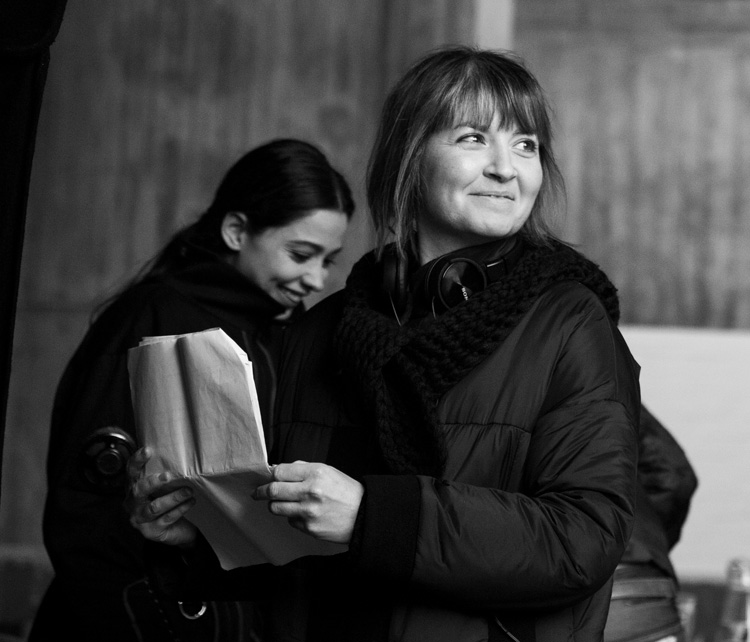
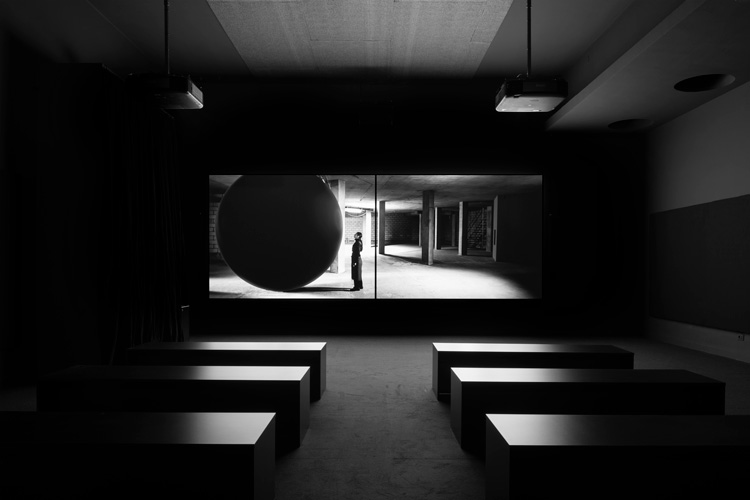
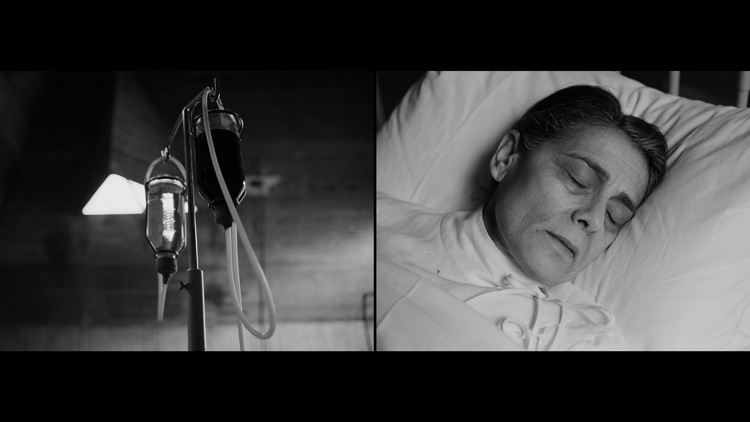
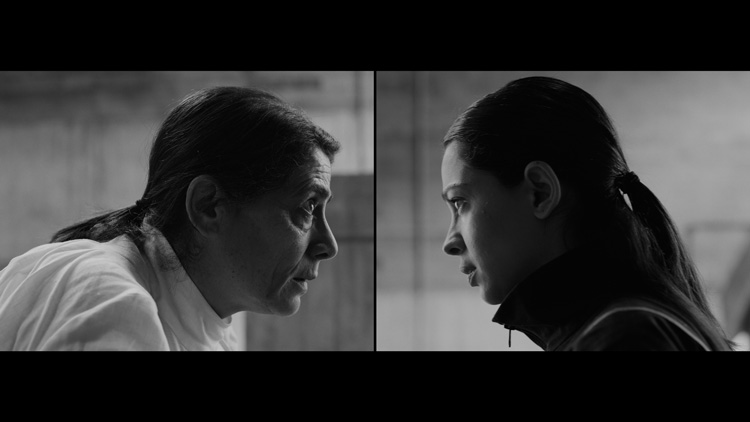
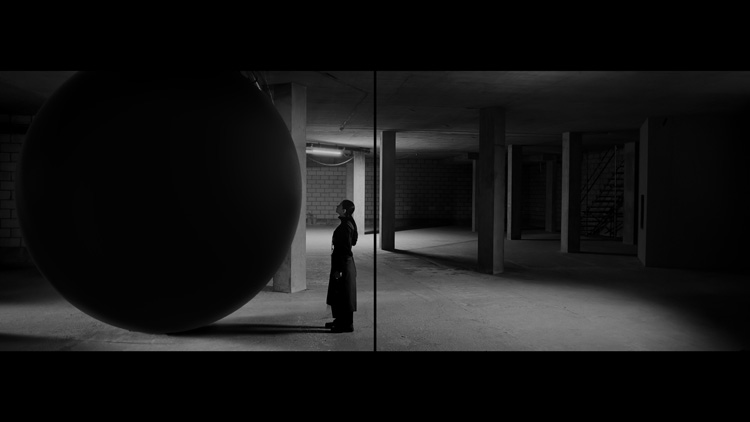
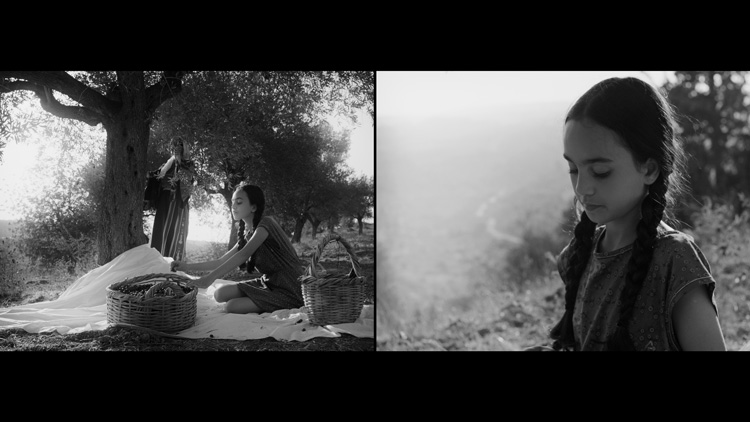
.jpg)
.jpg)
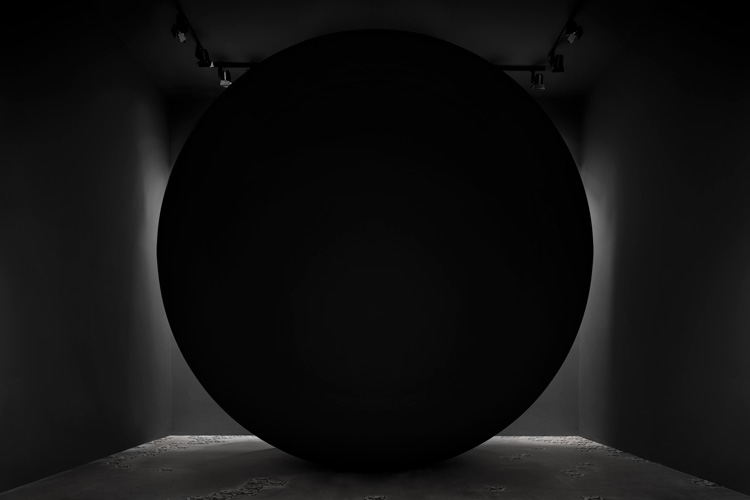
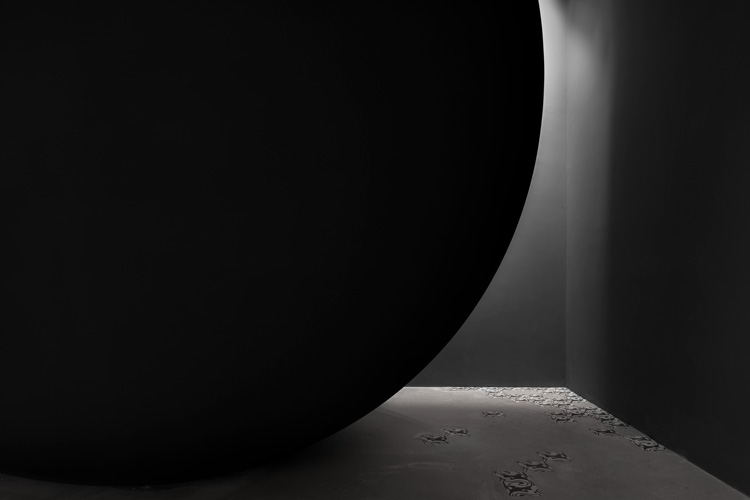
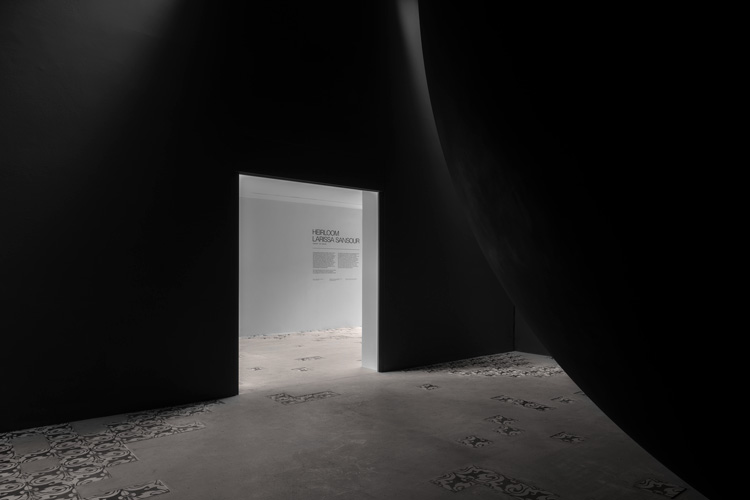
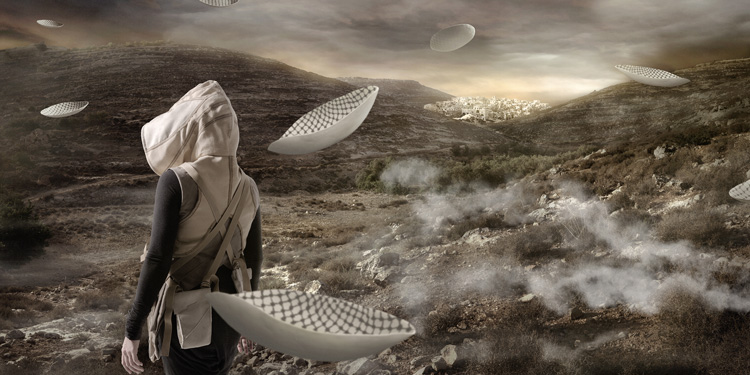
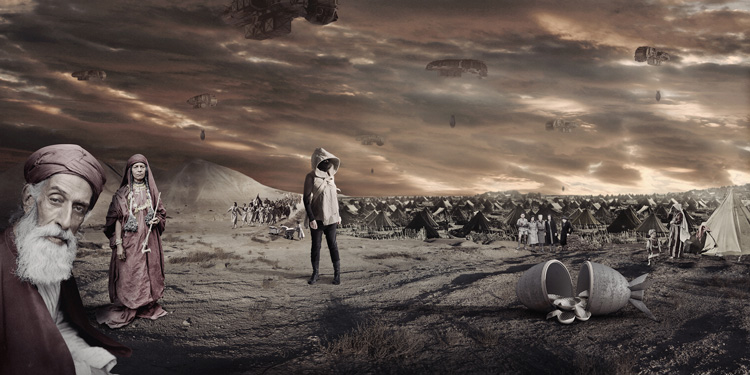
.jpg)